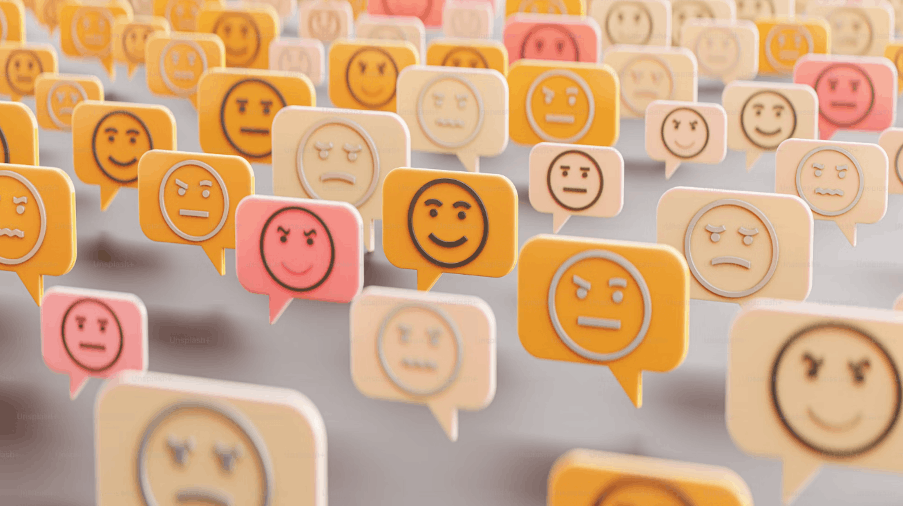Mind the Gap (2/2): Environmental Behavior and Observed Consequences
Go With The Flow
Frequently, consumers do not behave rationally when making decisions [7]. Even when faced with more beneficial alternatives, consumers tend to revert to a known ‘default’ choice, or ‘go with the flow’ and choose a pre-set option that is provided to them [8]. The occurrence of this behavior increases as the complexity of the information regarding the decision increases [9]. However, by ensuring consumers are provided with a green ‘default’ choice, consumers are much more likely to engage in green behavior.
"Schönau is a small German town with a population of 2500, located near the black forest. In 1997 a citizen’s initiative purchased the Schönau electrical grid and began purchasing its energy from renewable sources, such as solar energy. When the German electricity market was opened in 1998, this initiative became the EWS (elektrizitätswerke Schönau, the Schönau power company), and by default, the incumbent electricity supplier in Schönau."
If we fast forward to 2006, 1669 out of 1683 electricity meters in Schönau were still supplied with renewable derived electricity from EWS.10 Nearly every energy consumer in Schönau remained with the green, default provider. In nearby towns, where the default is non-renewable energy, only 1 % of electricity meters are supplied with electricity from renewable sources. Clearly, energy consumers are reluctant to change their ‘default’ tariff or provider, even when faced with superior monetary of environmental outcome.
Behavioral Science, Democratized
We make 35,000 decisions each day, often in environments that aren’t conducive to making sound choices.
At TDL, we work with organizations in the public and private sectors—from new startups, to governments, to established players like the Gates Foundation—to debias decision-making and create better outcomes for everyone.
In 1999, another German electricity provider, Energiedienst GmbH, began offering three new energy tariffs, and letters were sent to 150,000 private and business customers explaining these new options [10]. Customers were given three options for their tariff: a slightly cheaper green tariff, an 8 % cheaper non-green tariff or a 23 % more expensive (but greener) tariff. Customers wishing to change to the latter two tariffs were required to respond, otherwise they would be switched to the slightly cheaper green tariff automatically.
After two months, 4.3 % of customers had switched to the 8 % cheaper (non-green) tariff, and 1 % had switched to the more expensive (but greener) tariff. 94 % of customers, however, did not respond, ‘picking’ the default green option, even though there was a significantly cheaper or greener option available. Whilst providing consumers with a green default in these instances led to green behavior, it is not always possible to establish a green default choice. This is especially true if the consumer has an established behavior pattern that includes has a non-green default choice.
If providing consumers with a green default is not possible, are there additional methods for motivating consumers to behave in an environmentally responsible manner?
Breaking The Habit
40 % of the daily actions we undertake are habits and involve no conscious thought or effort, saving our mental capacity for other tasks throughout our day [11]. Whilst some habits, such as recycling, have positive environmental consequences, many do not. How can we intervene, and break consumer’s habitual behaviors that have negative environmental consequences?
"Behavioral economics tells us that financial incentives, typically as subsidies or taxes enacted by the state, are an effective tool for changing both businesses’ and consumer’s behavior. However, if we are going to use money as a motivator, is it more effective to offer financial incentives for good behavior or to financially penalise bad behavior?"
Several studies support a ‘loss averse’ model for consumer’s behavior, in which consumers react much more strongly to the prospect of losing money than to obtaining a comparable financial windfall [12].
A 2012 initiative in Montgomery County, Maryland, that required all retailers to charge customers 5 cents for disposable plastic bags led to a 72 % decrease in plastic bag litter [13]. Clearly financially penalizing customers for not engaging in environmentally damaging behavior had the desired effect.
However, would this initiative work the other way around? What if stores gave customers 5 cents for each disposable bag they didn’t use?
Before the 2012 initiative, several stores already offered incentives and disincentives relating to customers’ plastic bag use. At stores that offered no incentive for plastic bag reuse, 84 % of customers used one or more plastic bags [14]. At stores where customers were given 5 cents for each reusable bag they used for their shopping, 82 % of customers took one or more disposable plastic bag with their purchase, a decrease of 2 %.
However, at stores that charged customers 5 cents for each plastic bag they used with their shopping, only 39 % of customers used a disposal plastic bag with their purchase, despite the overall monetary cost/benefit being identical in both instances. When it comes to plastic bags, penalising shoppers for making bad environmental choices is significantly more effective than rewarding them for making good ones.
In instances where financially penalizing behavior is not possible or practical, a softer approach is the introduction of ‘hassle factors’ to more subtly penalize undesirable behavior [15].
A hassle factor is broadly defined as a factor that inconveniences us when performing our desired action. For example waiting, travelling or filling out paperwork are all examples of hassle factors that might dissuade us from taking a particular course of action.
Hassle factors are particularly effective at changing behavior in the workplace, where financially penalizing employees is unlikely to be possible. In 2012, chlorinated solvents accounted for 15 % of all solvent use at the pharmaceutical giant GlaxoSmithKline, with the majority being used in drug intermediate purification [16]. Whilst the environmental hazards and costly disposal procedures of chlorinated solvents are well known, their use remains widespread in chemical industry [17].
Whilst the use of these solvents was sometimes necessary, in most cases more environmentally friendly solvents could be used instead [18]. Employees at GlaxoSmithKline were aware of this, as well as the negative environmental impacts of chlorinated solvent use.
In 2012, instead of an outright ban, the storage of chlorinated solvents was forbidden in the same room as the communal purification equipment. Employees were still allowed to use chlorinated solvents during purification, but would have bring the solvent (typically a 4 kg container) from their own laboratory, and then remove if afterwards.
The AI Governance Challenge
In 2015, chlorinated solvent use had dropped to 9 % of total solvent use across GlaxoSmithKline. The addition of a ‘hassle factor’ (carrying the solvent to the purification lab) was sufficient to dissuade employees from using chlorinated solvents unless they had to, without the need for an outright ban.
The Future’s (Almost) Green
With demand for water, energy and natural resources set to skyrocket in the next decade, our ‘default’ action cannot be to carry on with our present rates of consumption and waste [19]. In the absence of viable technologies to sustain our current lifestyles indefinitely, the onus is on us, as consumers, to change our behaviors [20]. Research indicates that 75 % of people who read this article do.
Read part 1 here.
References
[7] McFadden, D. L., The New Science of Pleasure. National Bureau of Economic Research Working Paper Series 2013, 18687.
[8] Frederiks, E. R.; Stenner, K.; Hobman, E. V., Household energy use: Applying behavioral economics to understand consumer decision-making and behavior. Renewable and Sustainable Energy Reviews 2015, 41, 1385-1394.
[9] Kahneman, D.; Knetsch, J. L.; Thaler, R. H., Anomalies: The Endowment Effect, Loss Aversion, and Status Quo Bias. Journal of Economic Perspectives 1991, 5 (1), 193-206.
[10] Pichert, D.; Katsikopoulos, K. V., Green defaults: Information presentation and pro-environmental behavior. Journal of Environmental Psychology 2008, 28 (1), 63-73.
[11] Wendy Wood, J. M. Q., Deborah A. Kashy, Habits in everyday life: Thought, emotion, and action. Personality and Social Psychology 2002, 83 (6), 1281-1297.
[12] Kahneman, D., A Psychological Perspective on Economics. American Economic Review 2003, 93 (2), 162-168.
[13] Bag Fees at Work: An Analysis of Reductions in Plastic Bags from Potomac River Watershed Cleanups 2007-2014, Alice Ferguson Foundation, 2015.
[14] Tatiana, A. H., Can Small Incentives Have Large Effects? The Impact of Taxes versus Bonuses on Disposable Bag Use. Proceedings. Annual Conference on Taxation and Minutes of the Annual Meeting of the National Tax Association 2012, 105, 64-90.
[15] Anja Lambrecht, C. T. The hassle factor London Business School Review [Online], 2010.
[16] (a) Peterson, E. A.; Dillon, B.; Raheem, I.; Richardson, P.; Richter, D.; Schmidt, R.; Sneddon, H. F., Sustainable chromatography (an oxymoron?). Green Chemistry 2014, 16 (9), 4060-4075; (b) Sneddon, H. In Computers In Chemistry, 251st ACS National Meeting, San Diego, ACS: San Diego, 2016.
[17] Alder, C. M.; Hayler, J. D.; Henderson, R. K.; Redman, A. M.; Shukla, L.; Shuster, L. E.; Sneddon, H. F., Updating and further expanding GSK’s solvent sustainability guide. Green Chemistry 2016, 18 (13), 3879-3890.
[18] MacMillan, D. S.; Murray, J.; Sneddon, H. F.; Jamieson, C.; Watson, A. J. B., Replacement of dichloromethane within chromatographic purification: a guide to alternative solvents. Green Chemistry 2012, 14 (11), 3016-3019.
[19] (a) Rasul, G., Managing the food, water, and energy nexus for achieving the Sustainable Development Goals in South Asia. Environmental Development 2016, 18, 14-25; (b) Bhaduri, A.; Ringler, C.; Dombrowski, I.; Mohtar, R.; Scheumann, W., Sustainability in the water–energy–food nexus. Water International 2015, 40 (5-6), 723-732.
[20] Rugolo, J.; Aziz, M. J., Electricity storage for intermittent renewable sources. Energy & Environmental Science 2012, 5 (5), 7151-7160.
About the Author
Tim Douglas
Tim is a PhD student at the Centre for Doctoral Training in Sustainable Chemistry at the University of Nottingham. Tim has an MSci in chemistry, also from the University of Nottingham, where he conducted research for GlaxoSmithKline. He is interested in utilizing behavioral science to foster sustainable consumption patterns.





